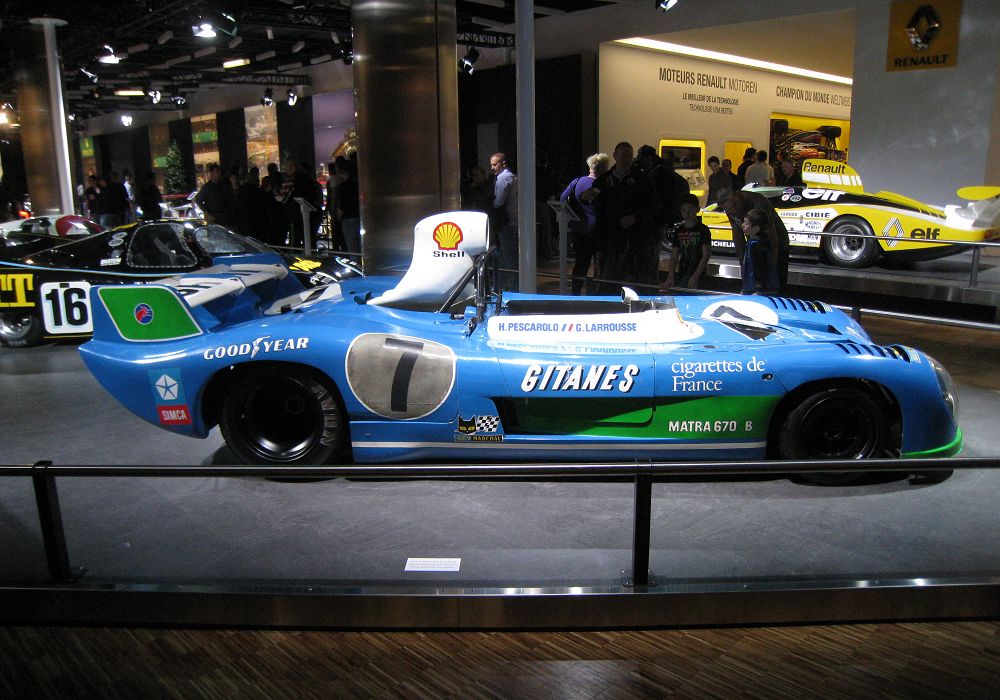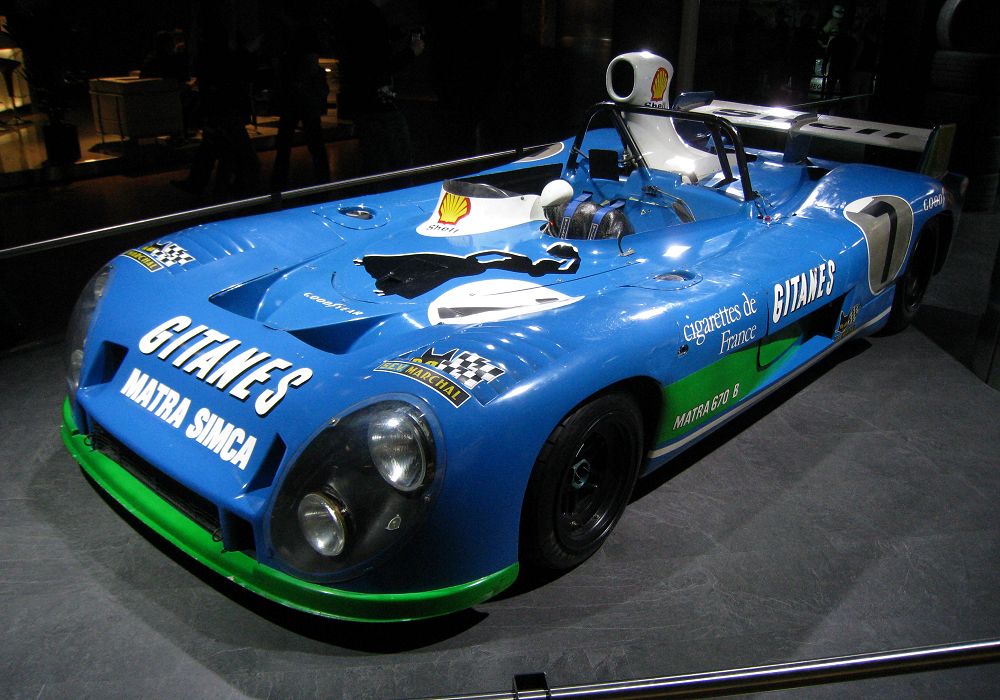Description
The Matra-Simca 670 B was one of the key evolutions of Matra’s legendary 670 endurance-racing lineage — the family of prototypes that brought France three consecutive victories at the 24 Hours of Le Mans. Introduced for the 1973 season, the 670 B represented a significant refinement over the original 670 of 1972. It featured improved aerodynamics, better suspension geometry, and important developments to Matra’s iconic 3-litre V12 engine. Although visually similar to its predecessor, the 670 B was more stable, more efficient, and more consistently competitive throughout long-distance racing. It became the machine that Matra relied upon during its most successful period and formed the backbone of the team’s 1973 triumph at Le Mans.
The 670 B retained the aluminium monocoque chassis layout that characterised the 670 programme but incorporated several structural adjustments. The tub was stiffened at key points, giving the car more predictable handling during long stints and improving durability over rougher circuits. Suspension pickup points were revised to enhance geometry under load, allowing drivers to push harder for longer without upsetting the balance. Matra also refined the car’s fibreglass bodywork, reshaping the nose, smoothing the flanks and modifying the tail to optimise airflow at high speed. These improvements made the 670 B more stable on the Mulsanne Straight and more agile in the technical sections of endurance tracks.
At the heart of the 670 B was Matra’s celebrated 3.0-litre V12 engine, the MS73, derived from years of intensive development in both Formula One and endurance racing. In B-spec, the engine produced around 450 horsepower at extremely high revs, delivered with the sharp, metallic scream that became Matra’s signature. The V12 featured four overhead camshafts, twelve individual intake trumpets and a highly sophisticated fuel-injection system. The unit was mounted behind the driver and paired with a Hewland five-speed racing gearbox, giving the 670 B exceptional flexibility over long stints. Although the V12 was still mechanically complex, Matra’s ongoing refinements resulted in improved cooling, stronger internals and better reliability than earlier versions.
The 670 B quickly proved competitive. At the 1973 24 Hours of Le Mans, Matra entered a fleet of upgraded cars with the B-spec improvements. The combination of aerodynamic stability, refined suspension and the high-revving V12 allowed the 670 B to maintain a relentless pace throughout the race. It was during this period that Matra truly hit its stride, with the cars running consistently at the front, benefiting from excellent straight-line speed and remarkable composure through corners. The result was a comprehensive victory for Matra and Simca, cementing the 670 B as one of the most successful prototypes in the brand’s history.
Drivers praised the 670 B for its balance and drivability. Compared with earlier Matra prototypes, which could be twitchy at the limit, the 670 B felt more planted and predictable. The refinements made to suspension stiffness and aerodynamics allowed the car to handle long, high-speed sections without instability, while still giving drivers the precision needed through tighter chicanes and braking zones. The V12’s broad power band, although best exploited at high rpm, was tractable enough for endurance conditions. Combined with the car’s low weight and rigid monocoque, these qualities made the 670 B both fast and confidence-inspiring.
The 670 B also demonstrated Matra’s ability to respond quickly to the ever-changing demands of endurance racing. Improvements in tyre performance, track conditions and race strategies were incorporated into the car’s ongoing development, ensuring it remained competitive throughout the season. The B-spec cars formed the template for the even more advanced 670 C introduced in 1974, but it was the 670 B that provided the foundation for Matra’s mid-era dominance.
By the end of its competitive life, the Matra-Simca 670 B had established itself as a landmark machine in French motorsport. It symbolised Matra’s peak — a combination of technical bravery, aerodynamic refinement and the unforgettable soundtrack of a high-revving French V12 at full throttle. Today the 670 B is revered for its role in Matra’s Le Mans victories and for its place in the golden era of prototype endurance racing. It stands as one of the most charismatic and historically significant sports-prototypes ever built, embodying Matra’s ambition and France’s determination to reclaim international motorsport glory.





